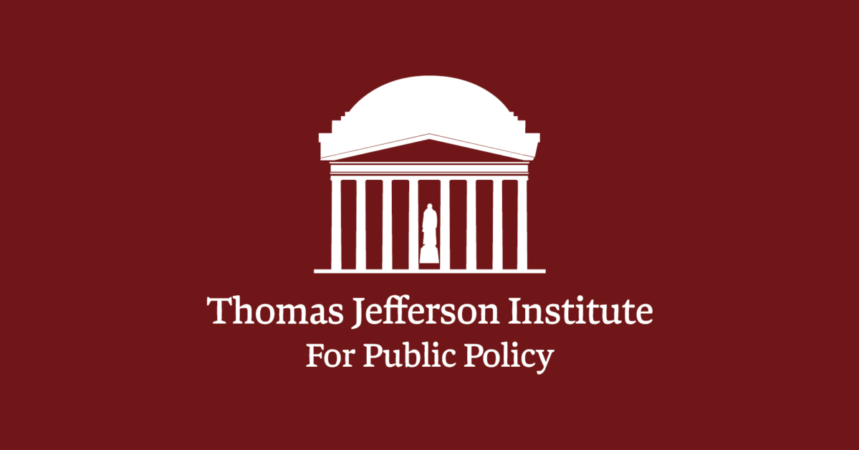Last week we introduced the Thomas Jefferson Institute’s transparency project and pointed out a couple of innovative transparency project being undertaken online. In Part II of our series on transparency we look to define the baseline levels of financial openness Virginia’s local governments should provide.
The advent of the internet was certainly a game changer. As its use and the universe of those using it continues to expand, expectations for how people access information, and how much, are rapidly changing. This goes double for local government. The internet has opened up a new, more vibrant public square where debates about all sorts of local issues happen, with greater frequency and inclusiveness than in previous eras. Local blogs, message boards and listservs have made it easier for citizens to engage in public debates and make their voices heard on questions of local governance. These tools have radically lowered the barrier to becoming involved in public debate and have greatly increased the ability of citizens to hold their government to account. It has also made it far easier for local governments to engage their residents on questions of governance and public spending. Successful government’s have put up one-stop-shops where those interested can access everything they need to become a citizen budget analyst. Everything that the government relies on to make its budget choices can be put online at very minimal expense.
In part because it is now so much easier to provide these levels of transparency, citizens now have a higher expectation for government openness. Across the country citizens have demanded that government checkbooks, contractor databases and general budget data be put online. But some localities have raced ahead of the curve, while many others have lagged far behind. So, in studying the state of online transparency efforts among Virginia’s localities, we come to the following question: What is the minimum level of online transparency a local government should provide?
Currently, Virginia’s localities cover the good, the bad and the ugly in online fiscal transparency. Some, such as Fairfax County, provide an easy to find budget page with full documents. Others, such as Arlington County, go a step further and include context about the budget right on their budget page, making it easier for citizens to find the document they need. Some, like Loudoun County, go one step beyond that and provide an online video archive of all the public meetings related to the budget process. But others, like Powhatan County, merely provide a list of documents, without any context or information about hearings or meeting dates. And then there is Patrick County, which doesn’t provide any discoverable budget information at all, beyond what is mentioned in their Board of Supervisors Minutes.
So what do we see as the baseline standard that all Virginia localities should meet in terms of budget transparency?
- Budget Portal: Counties should have a single, easily accessible website or webpage where all of their budget information is posted. Citizens shouldn’t have to go to five different places on the county website to find the budget information they are looking for. Ideally all the relevant information, items like past years budgets, contractor information, and expenditure data would all be in one place. At a minimum it should be linked to from one place. Just a list of documents isn’t enough either. Arlington has the right idea on its budget page. It provides a little overall context on the budget and makes it easy for citizens to figure out what they are looking for and at.
- Comprehensive Documentation: Approving a budget is a fluid, dynamic process and that should be well represented in the information provided. A county’s budget documents should be posted online from the start of the process on through completion. Updates should be made available for the proposed budget as it goes through markup and again as it reaches final passage. Moreover, the documents themselves should provide data down to the program level, allowing citizens to see how much is being spent on each program or office the county runs. High-level, departmental looks are nice, but for citizens to truly get a handle on how their money is being spent, much greater detail is needed. Finally, the documents should be both searchable and available in easy to access formats, such as Microsoft Excel files, allowing citizens to truly drill down, manipulate data and make comparisons across time and against other localities.
- Expenditure Information: Counties should provide timely and detailed information on expenditures. Just posting a mid-year report isn’t enough. The federal government and many states have already implemented online checkbooks that allow citizens to see everything the government spends money on. Counties need to do so too. Reports should be posted frequently and with a low minimum reporting requirement. Government’s should not be able to hide behind only releasing expenditures over $5,000 every 6 months.
- Contract Information: Government doesn’t do everything it once did. All sorts of functions that used to be governmental are now contracted out to the private sector. Counties need to release that information. Who got contracts from the government and what for? How much do the contracts cost? Citizens have a right to know.
If all of Virginia’s counties and school boards met these standards we would be a much more informed and aware citizenry, but this is just the tip of the iceberg. Simply following through on these measures, while a significant upgrade over the hodge-podge collection of documents that passes for transparency throughout much of the commonwealth, doesn’t take full advantage of power of the internet. There are a lot of additional things that governments can do that enable their citizens to get much more out of online transparency. From video archives to real time data feeds, innovative governments are making themselves more open and their constituents better informed. Next issue we’ll take a look at what the best practices in this new online world look like.






